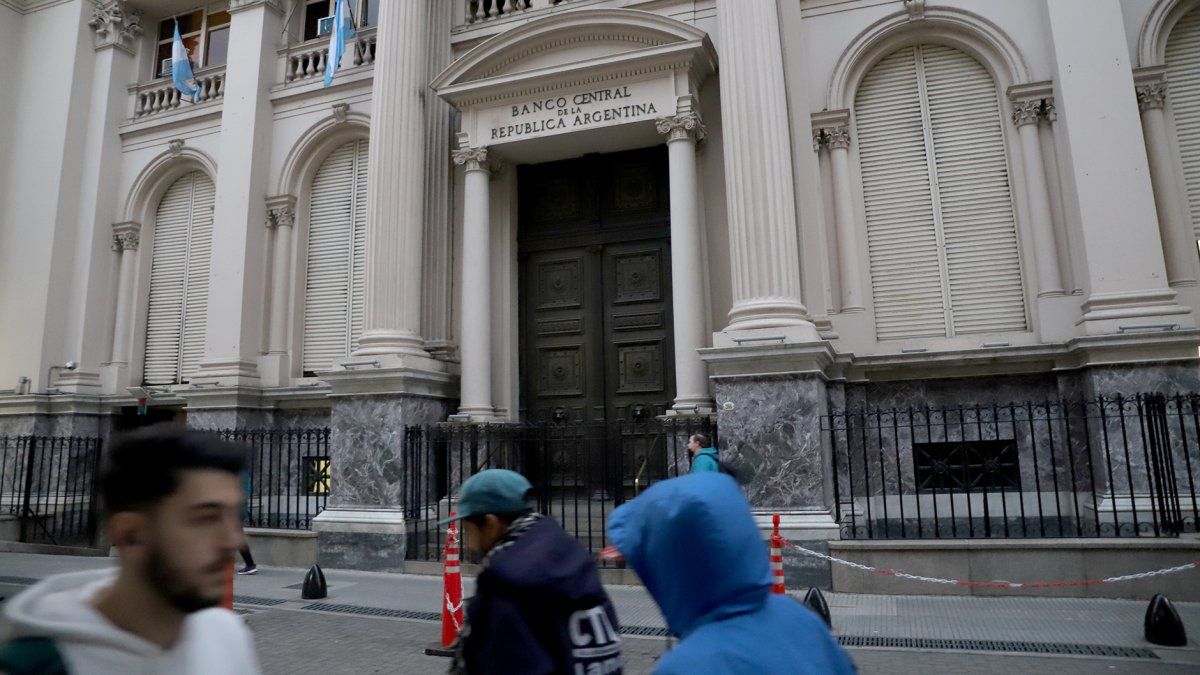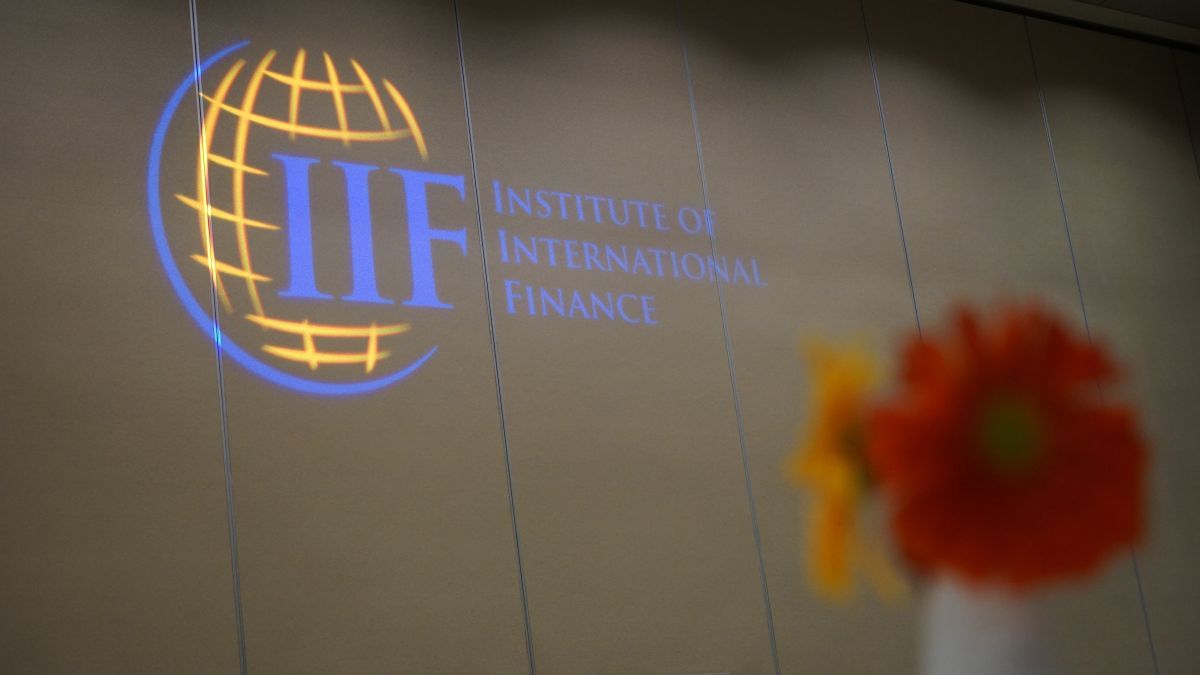As we address, and endorse, there is no possibility of controlling the exchange rate, maintaining an autonomous monetary policy and allowing the free movement of capital without devastating consequences. Adding insult to injury, the program included astonishing bandwidth for the floating exchange rate between the bottom and the top. In this fabric, having eliminated the monetary issue, the BCRA could no longer finance the Treasury or purchase dollars within the non-intervention zone agreed with the IMF.
The government considered that the volatility of the dollar would condition the probability of presidential re-election of President Mauricio Macri. It’s the only thing they were worried about. For this reason, the BCRA -which was not independent at all-, was trying for political reasons to keep the price of the dollar flat with a reference interest rate close to 70% annual nominal. Remember that since the stock reached by the Leliqs was not enough to maintain the peace of the dollar, the Central decided to increase the ceiling of Leliqs that the banks could assume, stimulating a greater demand for these titles.
The BCRA, which had been conditioned by the Leliqs every 35 days -before disarming the positions-, at that moment was reduced in term with the daily payments of Leliq. The “extreme financial sport” had become commonplace. As if all this were not enough, the Central Bank assured the banks a floor interest rate for the Leliqs in April 2019.
The cost of this tactic had been, and would be as the months went by, a phenomenal collapse of private credit, with the consequent negative impact on activity and the general level of employment. With that true monetarist fundamentalism, the goal was to achieve an ever lower monetary base. In March 2019, the baseline was lower than February 2019, which was more contractive than the original schedule in October 2018. The baseline averaged more than 2% above requested compliance. Not even the IMF asked them so much.
To contain inflation and keep the dollar sedentary, the Central held extravagant profits for the banks. We thought they could crash the main street economy, and we weren’t wrong.
Going back to previous installments, the strategy was to demonize Cristina Kirchner, and its sole objective was to generate fear; however, unofficially it was rumored that a significant proportion of the UIA would support the election of Cristina in the presidential electionsinstead of Macri’s. Corporations loathed the former president, but alluded to having made a lot of money during 12 years of growth with the Kirchner governments. This was very crazy, but more bizarre was pretending not to know reality.
In another order of things, we were witnessing a new escalation of the dollar, due to the collapse of the demand for pesos and the scarce supply of foreign currency. but also due to price intervention plan that, suddenly, the government announced as in the best times of populism. The very high inflation of 4.7% in March supported the devaluation expectations that fed back into April and involved demands for salary adjustments -already with force measures on April 30-, boosting both the inflation rate and the devaluation and inflationary expectations.
The extreme weakness of economic activity, with an automotive industry that used only 15% of its installed capacity, generated greater social unrest, a decrease in tax revenue, difficulty in meeting the objective agreed with the IMF, and pressure on the country risk premium. , which was already flying above 1,000 basis points. All this, with a stock of Leliq growing rapidly due to high interest rates.
The anemic economic activity had generated a significant drop in tax collection and again, it was difficult to achieve primary fiscal balance. That objective that Dujovne announced and had been fulfilled had now made the country risk increase vertiginously, for fear of the future reversal of the results disclosed. The collection grew less than expected. Export withholdings were closer to $340 billion than the $440 billion taken by the government.
All other tax revenues would fall much more in real terms than Dujovne expected. In the first two months, tax revenues without withholdings showed a fall of (-13%) in real terms. Lazier revenue collection would complicate the convergence to the “zero primary deficit”.
With the projections, it was necessary to prepare for a primary deficit of around 1.5% of GDP in 2019. The weakness of activity, with high and persistent inflation that deteriorated wages, could lead to a growing level of unemployment. A social conflict of magnitude loomed. The government had been playing with fire again, and at some point it was going to burn. However, they kicked it forward and left it to Alberto Fernández.
The Let’s Change proposal suggested a promise: if the State and the people were built on the pragmatic business models of best practices and country benchmarking, future prospects would improve and a rain of investments would arrive, never to return to the recurrent ones. financial crises originated in indebtedness, preceded by increases in country risk and a fall in the price of sovereign bonds; In short, the ghost of a default would never again embarrass us.
Besides, the mortgage loans (UVA) praised by the deputy Tetaz (Cambiemos), would allow families to develop their quality of life by buying their own home and, at the same time, it would contribute to economic growth through “industry, mother of industries”.
Invest in education and generate tens of thousands of jobs, reduce pregnancies to obtain social benefits; it would put young people on the road to work instead of the State facing the expensive subsidies that fostered countless scoundrels and abusers, thus forging a destiny of glory, a truly competitive country. Nothing more stigmatizing and far from reality.
There were many talents trained by CONICET, but the State no longer financed researchers, they left, other countries would take advantage of the investment that Argentina had made in them. Cavallo was not there to “send the researchers to wash the dishes”, but they left verbal mediation.
An effort to understand the constitutive elements and the dynamics of the experimental grotesque Cambiemos, undermined the comprehension capacity of any academic, in the sense of identifying which were the strategies to obtain the progress that had been outlined in the discourse.
The relentless economic policy, with its own rationality, was spreading the failure of the model, and misconfiguring, not only companies, investors and market players; but to the entire citizenry, who witnessed the disastrous events in anguish.
Executive Director of Fundación Esperanza. Graduate Professor UBA and Masters in private universities. Master in International Economic Policy, Doctor in Political Science, author of 6 books.
Source: Ambito
David William is a talented author who has made a name for himself in the world of writing. He is a professional author who writes on a wide range of topics, from general interest to opinion news. David is currently working as a writer at 24 hours worlds where he brings his unique perspective and in-depth research to his articles, making them both informative and engaging.




